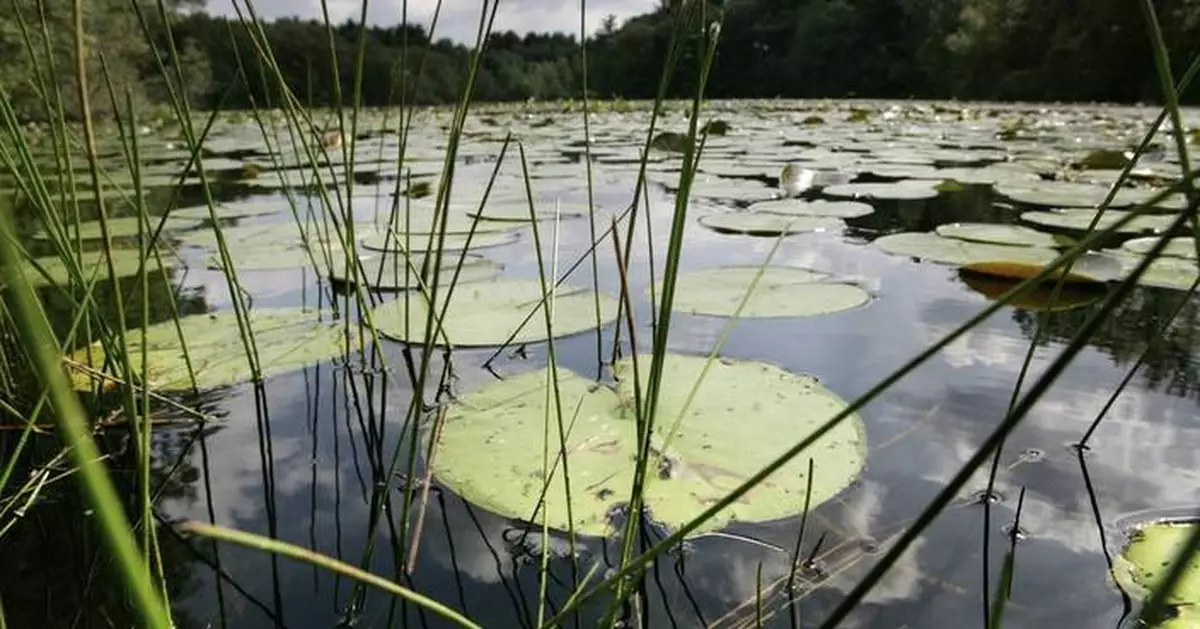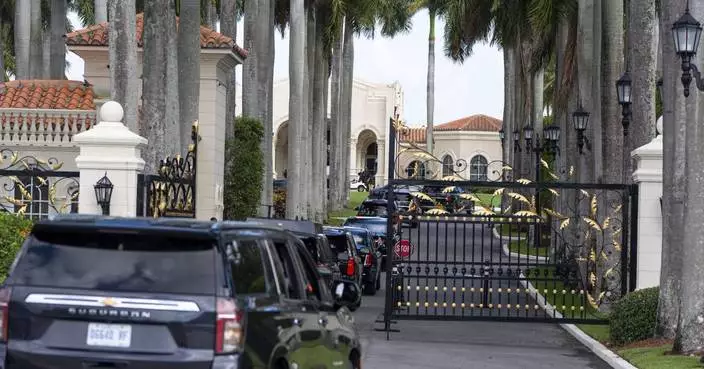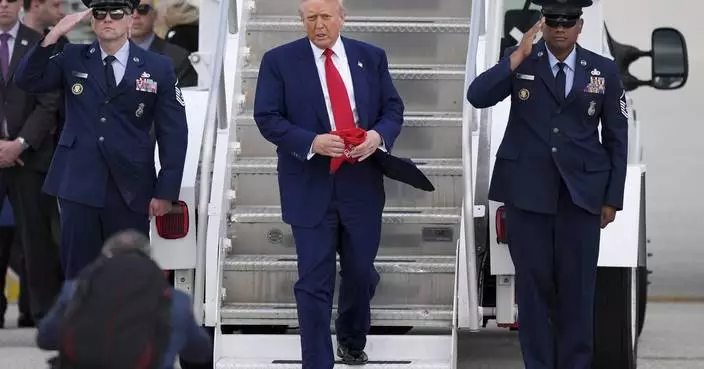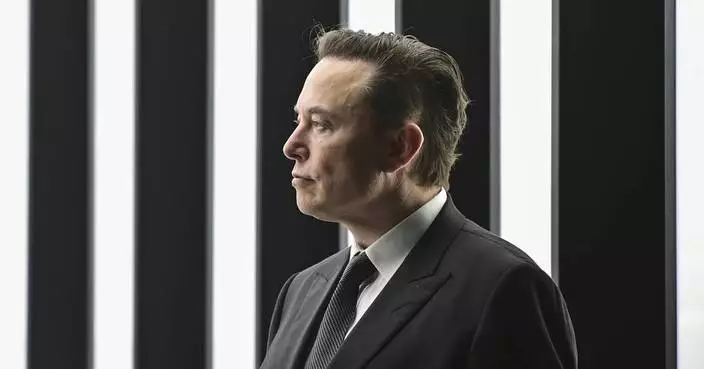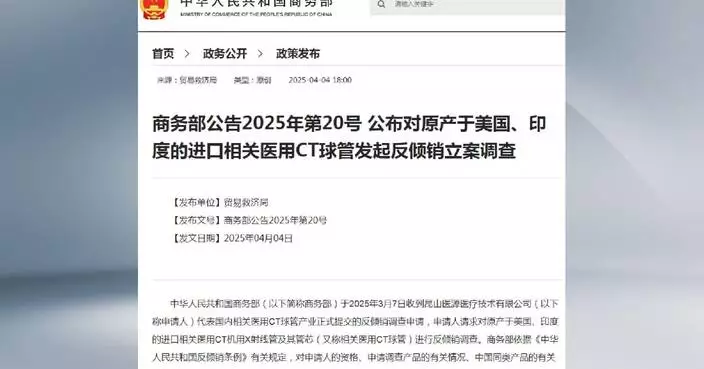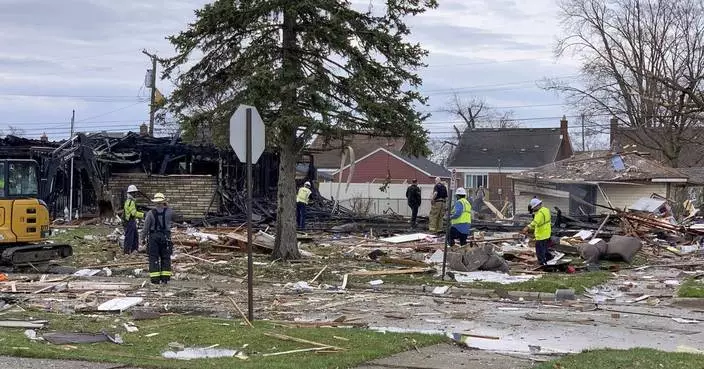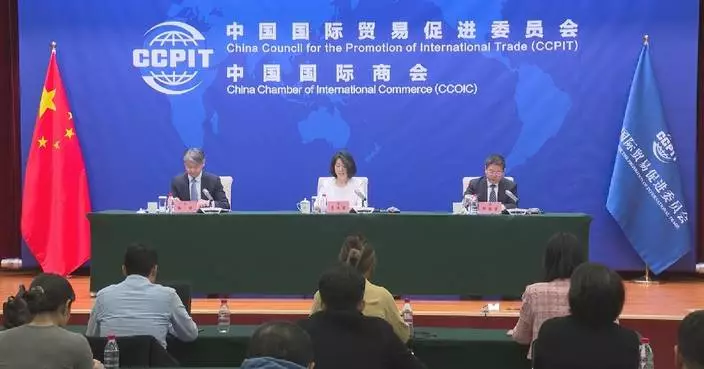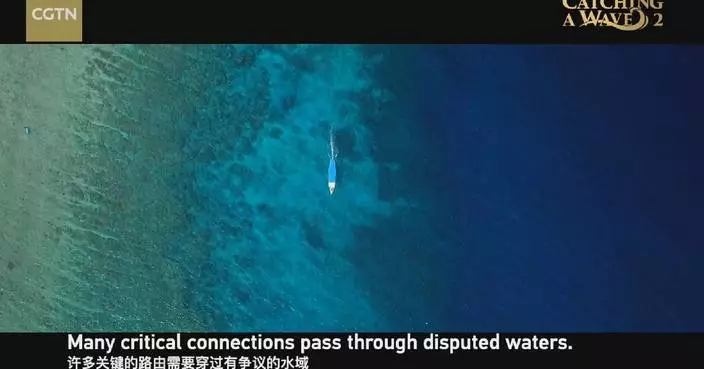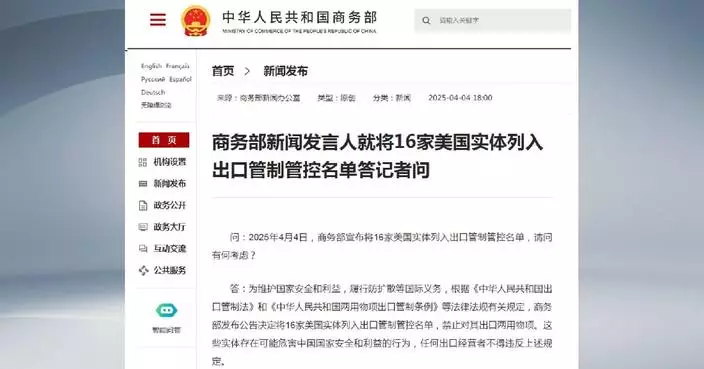WASHINGTON (AP) — Nearly a quarter of animals living in rivers, lakes and other freshwater sources are threatened with extinction, according to new research published Wednesday.
“Huge rivers like the Amazon can appear mighty, but at the same time freshwater environments are very fragile,” said study co-author Patricia Charvet, a biologist at Brazil's Federal University of Ceará.
Click to Gallery
FILE - Neotropic cormorants roost on a high voltage cable at sunset near the Paraguay River, in Asuncion, Paraguay, Saturday, Aug. 14, 2021. (AP Photo/Jorge Saenz, File)
FILE - An algae bloom appears on the Caloosahatchee River at the W.P. Franklin Lock and Dam in Alva, Fla., on Thursday, July 12, 2018. (AP Photo/Lynne Sladky, File)
FILE - A crayfish walks on pavement after floodwaters from the Ahr River receded in Schuld, Germany, Friday, July 16, 2021. (AP Photo/Michael Probst, File)
FILE - Fish swim past mud that was released by the collapse of a mining company's dam, in a tributary that leads to Paraopeba River near a community of the Pataxo Ha-ha-hae indigenous people, in Brumadinho, Brazil, Tuesday, Jan. 29, 2019. (AP Photo/Leo Correa, File)
FILE - A dragonfly flies over a plastic bottle near the bank of Sava River in Obrenovac, some 25 kilometers (15 miles) west of the Serbian capital Belgrade, on Tuesday, May 28, 2013. (AP Photo/Darko Vojinovic, File)
FILE - The Nanay River winding through Peru's Amazon jungle near Iquitos is seen on April 18, 2015. (AP Photo/Rodrigo Abd, File)
FILE - Lily pads rest on the surface of St. Moritz Pond, at the Blue Hills Reservation, in Quincy, Mass., Tuesday, Aug. 17, 2004. (AP Photo/Steven Senne, File)
Freshwater habitats – including rivers, lakes, ponds, streams, bogs and wetlands – cover less than 1% of the planet’s surface, but support 10% of its animal species, said Catherine Sayer, a zoologist at the International Union for Conservation of Nature in England.
The researchers examined around 23,500 species of dragonflies, fish, crabs and other animals that depend exclusively on freshwater ecosystems. They found that 24% were at risk of extinction – classified as vulnerable, endangered or critically endangered – due to compounding threats from pollution, dams, water extraction, agriculture, invasive species, climate change and other disruptions.
“Most species don’t have just one threat putting them at risk of extinction, but many threats acting together,” said Sayer, a study-co-author.
The tally, published in the journal Nature, is the first that time researchers have analyzed the global risk to freshwater species. Previous studies have focused on land animals including including mammals, birds and reptiles.
Duke University ecologist Stuart Pimm, who was not involved in the study, called it “a long-awaited and hugely important paper."
“Almost every big river in North America and Europe is massively modified" through damming, putting freshwater species at risk, he said.
In South America, the vast Amazon River ecosystem also faces threats from deforestation, wildfires and illegal gold mining, said Charvet.
Illegal fires to clear forest result in waves of ash polluting the river, and unlicensed gold miners dump mercury into the water, she said.
Rivers and wetlands “concentrate everything that happens around them," she said. "If something goes really wrong, like an acid or oil spill, you can threaten an entire species. There’s nowhere else for these animals to go.”
The Associated Press Health and Science Department receives support from the Howard Hughes Medical Institute’s Science and Educational Media Group. The AP is solely responsible for all content.
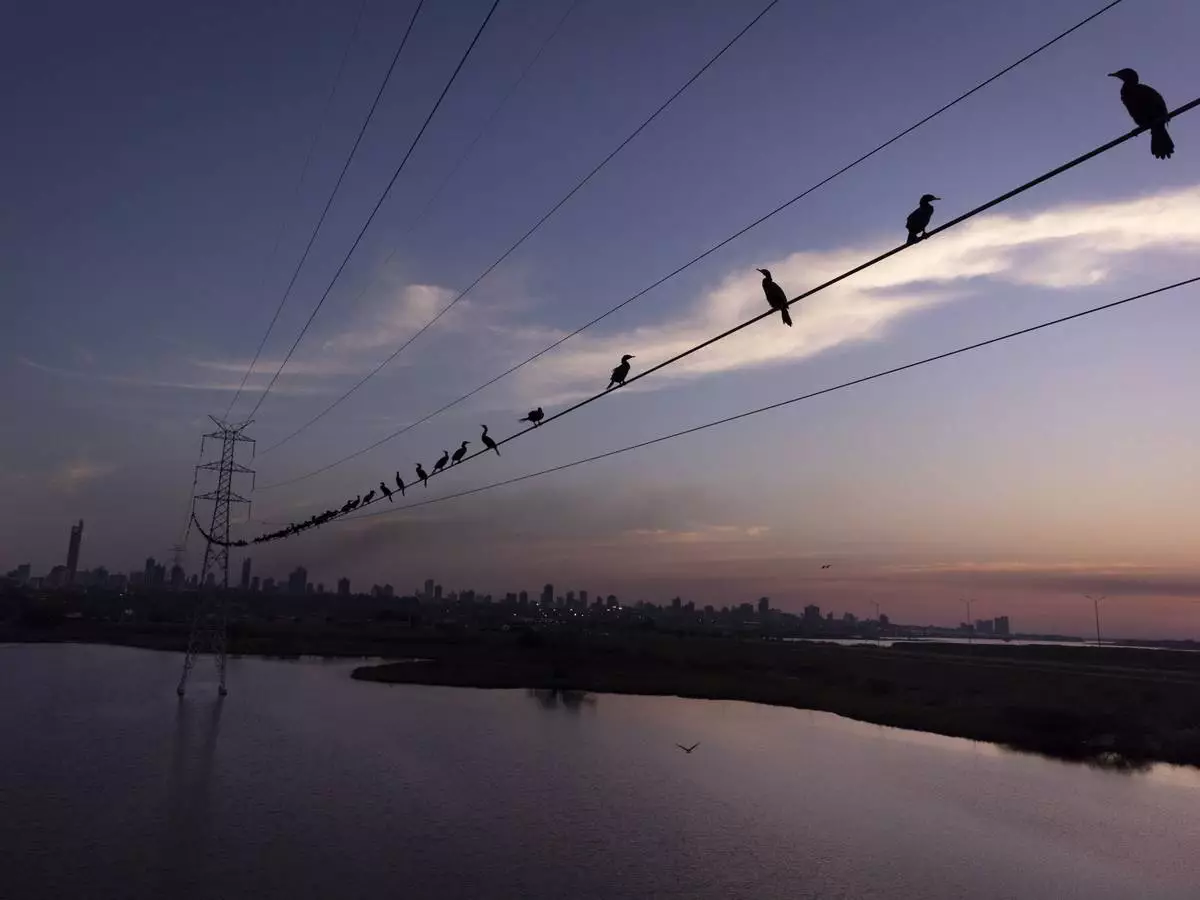
FILE - Neotropic cormorants roost on a high voltage cable at sunset near the Paraguay River, in Asuncion, Paraguay, Saturday, Aug. 14, 2021. (AP Photo/Jorge Saenz, File)
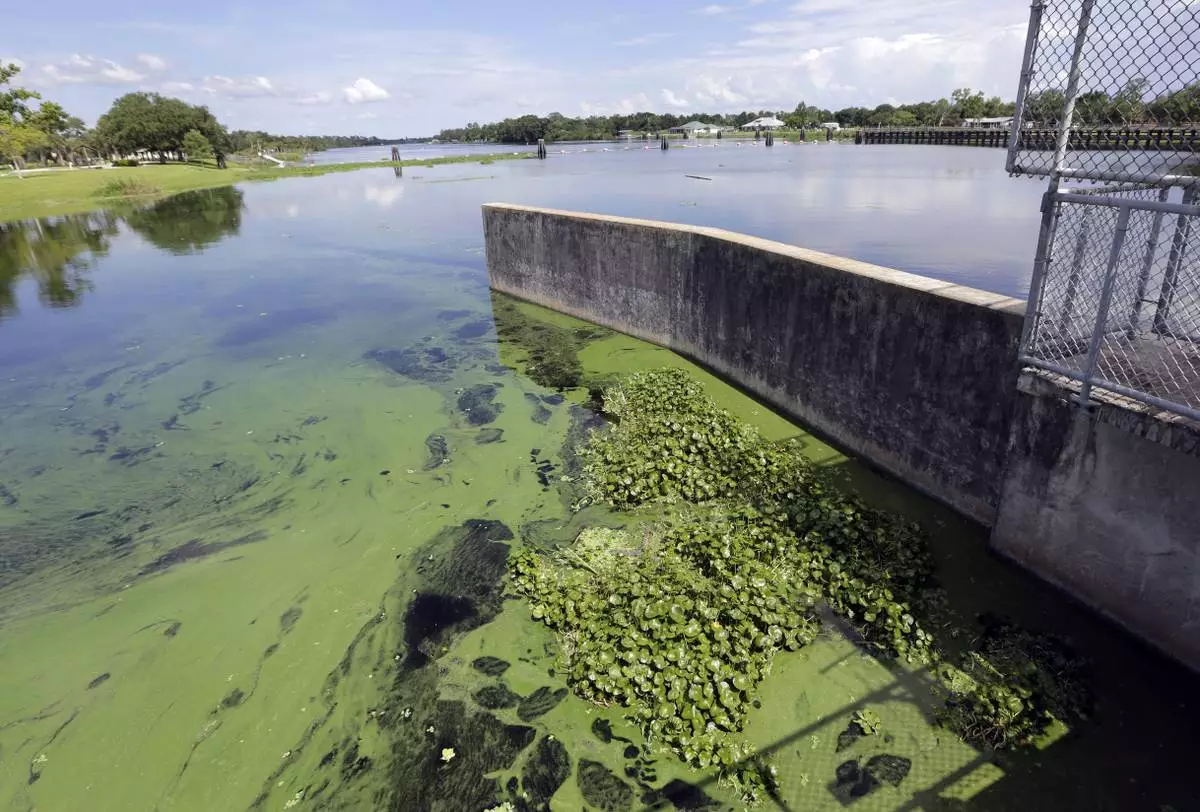
FILE - An algae bloom appears on the Caloosahatchee River at the W.P. Franklin Lock and Dam in Alva, Fla., on Thursday, July 12, 2018. (AP Photo/Lynne Sladky, File)
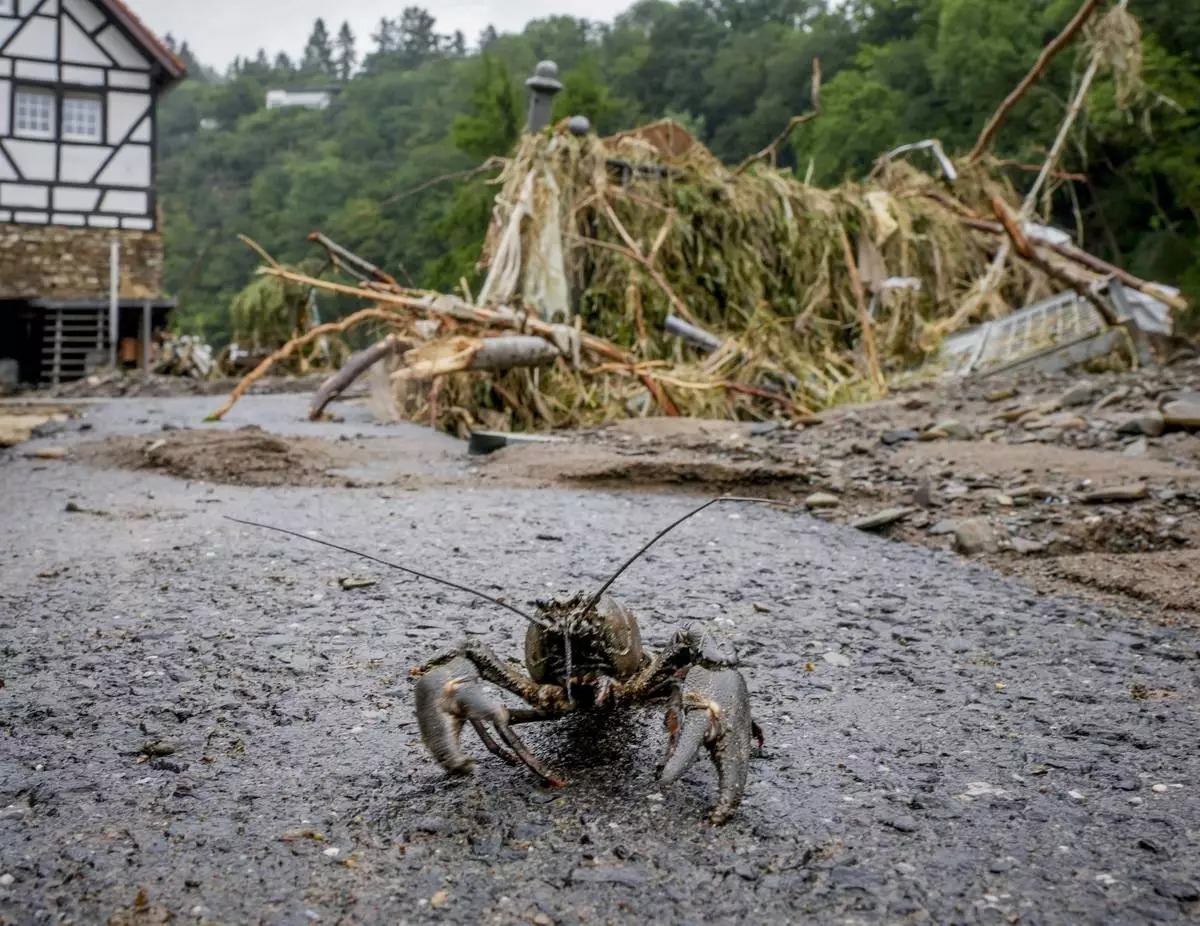
FILE - A crayfish walks on pavement after floodwaters from the Ahr River receded in Schuld, Germany, Friday, July 16, 2021. (AP Photo/Michael Probst, File)

FILE - Fish swim past mud that was released by the collapse of a mining company's dam, in a tributary that leads to Paraopeba River near a community of the Pataxo Ha-ha-hae indigenous people, in Brumadinho, Brazil, Tuesday, Jan. 29, 2019. (AP Photo/Leo Correa, File)
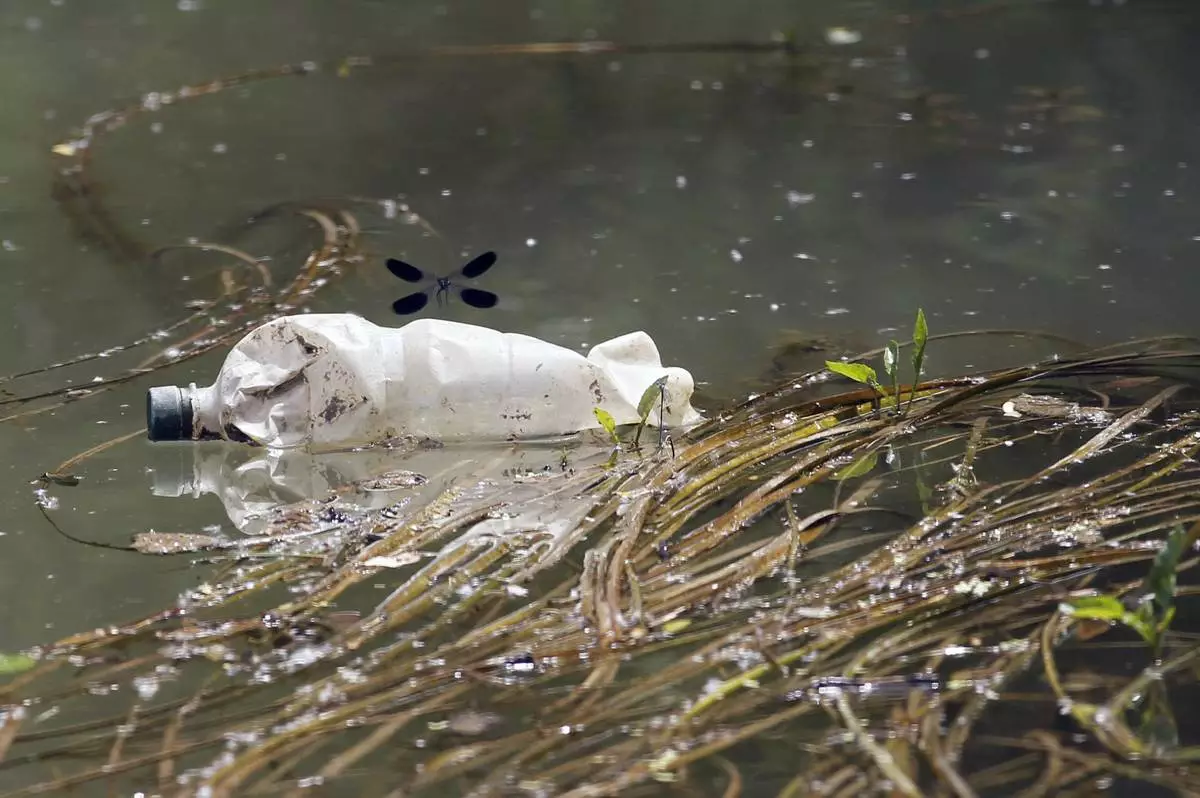
FILE - A dragonfly flies over a plastic bottle near the bank of Sava River in Obrenovac, some 25 kilometers (15 miles) west of the Serbian capital Belgrade, on Tuesday, May 28, 2013. (AP Photo/Darko Vojinovic, File)
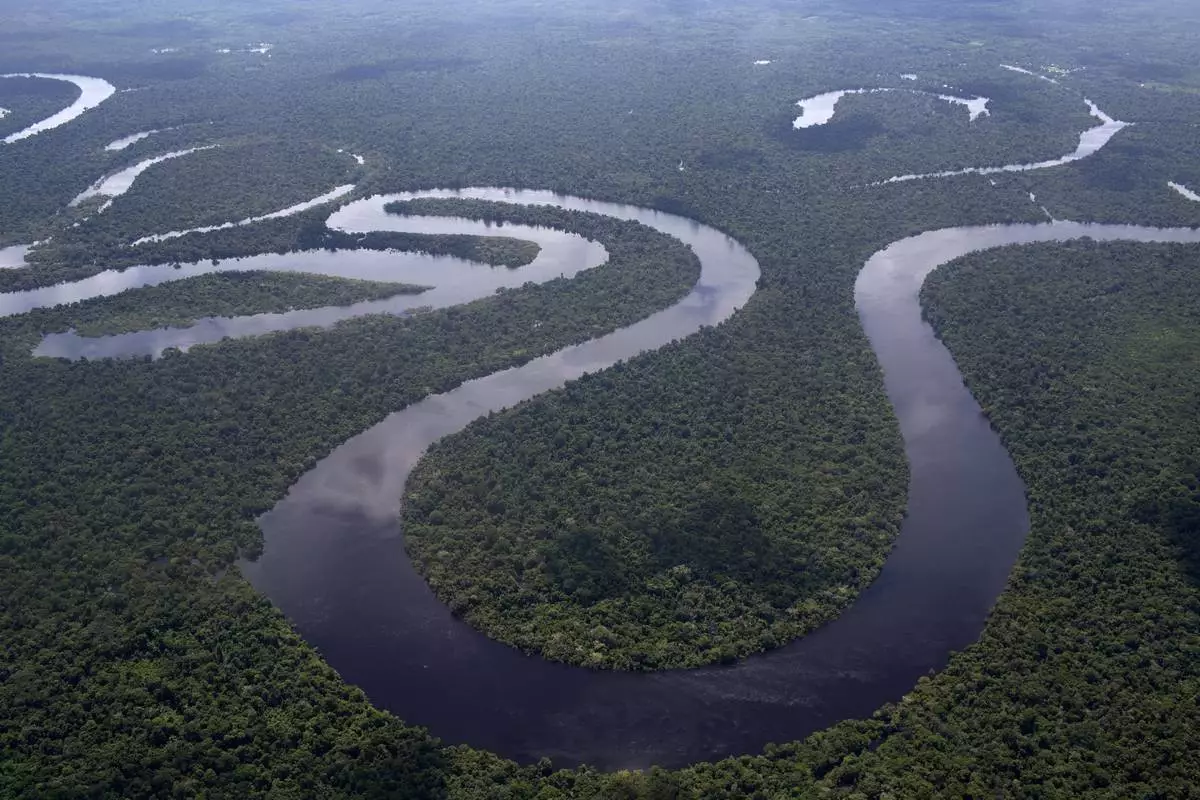
FILE - The Nanay River winding through Peru's Amazon jungle near Iquitos is seen on April 18, 2015. (AP Photo/Rodrigo Abd, File)

FILE - Lily pads rest on the surface of St. Moritz Pond, at the Blue Hills Reservation, in Quincy, Mass., Tuesday, Aug. 17, 2004. (AP Photo/Steven Senne, File)
WASHINGTON (AP) — As stock markets tumble in the aftermath of President Donald Trump's sweeping tariffs, Republicans in Congress were watching with unease and talking of clawing back their power to levy tariffs — but almost none seemed ready to turn their words into action.
The Republican president is upending longstanding GOP principles like support for free trade, yet despite clear misgivings and a Constitutional mandate to decide tariffs, most lawmakers were not ready to cross Trump. Instead, they were focusing all their attention on advancing the president's " big, beautiful bill ” of tax breaks and spending cuts, even as tariffs — in essence, import taxes — threatened to raise consumer prices across the board and push the global economy into a recession.
As the fallout from Trump's announcement reverberated around global markets, Senate Majority Leader John Thune, who has made it clear he is no fan of tariffs, told reporters that he would give Trump "the benefit of the doubt” in hopes that the announcement was just a scare tactic to prod foreign leaders into negotiating better trade deals with the U.S.
“The president is a dealmaker if nothing else, and he's going to continue to deal country by country with each of them,” said Sen. John Barrasso, a Wyoming Republican who is no. 2 in GOP Senate leadership. He added that Treasury Secretary Scott Bessent had told Senate Republicans this week that the tariffs announced by Trump would be a “high level mark with the ultimate goal of getting them reduced” unless other countries retaliate.
But countries like China are already retaliating with tariffs of their own, and while the president has signaled he is open to negotiations, he was mostly sounding a defiant tone Friday, saying on social media that “MY POLICIES WILL NEVER CHANGE” while claiming that foreign investors were lining up to invest in U.S. industries. He was on the golf course Friday near his Mar-a-Lago private club in Florida.
Congress, however, was jittery.
A handful of Republicans have rebuked Trump's strategy as a foolhardy path that will burden U.S. households. Kentucky Sen. Mitch McConnell, the longtime Senate leader who was the standard-bearer for past generations of Republicans, released a lengthy statement saying, “As I have always warned, tariffs are bad policy, and trade wars with our partners hurt working people most.”
McConnell and three other Republicans joined with Democrats this week to help pass a resolution that would nullify Trump's tariffs on Canada, sending a rebuke to the president just hours after his “Liberation Day” announcement. But House Speaker Mike Johnson quickly indicated he has no interest in giving the resolution a vote.
Lawmakers' struggle to act showed the divide among Republicans on trade policy, with a mostly younger group of Republicans fiercely backing Trump's strategy. Rather than heed traditional free trade doctrine, they argue for “America First” protectionism and hope it will revive U.S. manufacturing.
Republican Sen. Josh Hawley said that workers in his home state of Missouri were “absolutely thrilled” with the tariffs. “We've been losing jobs left and right. Farmers want to see a fair deal for our products, both in Canada and in Mexico and from the (European Union)," he added.
For their part, Democrats slammed Trump's tariffs as a reckless maneuver meant to do nothing more than raise funds for the tax breaks Trump and Republicans are trying to pass.
“Why would he raise the costs on American families by $5,000, as it’s estimated? Simply because his very wealthy billionaire friends want a greater tax break,” Senate Democratic Leader Chuck Schumer said in a floor speech Friday.
Other Republicans were looking for roundabout ways to at least check the president's power on trade policy. Sen. Chuck Grassley, a senior Republican from Iowa, introduced a bipartisan bill Thursday that would require presidents to justify new tariffs to Congress. Lawmakers would then have to approve the tariffs within 60 days, or they would expire.
Although Grassley emphasized that he had long been working on the idea, the timing of the bill was notable. It gave Republicans a chance to talk about their distaste for import taxes and raised the prospect of Congress clawing back some of its power over tariffs. The Constitution gives Congress the responsibility of setting taxes and tariffs, but over the last century, lawmakers have ceded much of their power over import taxes to the president.
A handful of Republicans said they were favorable to Grassley's proposal, though the idea of directly defying Trump seemed to squelch potential for quick action.
“I don’t want to do it in a politically charged environment,” said Sen. Mike Rounds, a South Dakota Republican. “But I absolutely agree. This was set up by the Founding Fathers to be Congress’s role. And, I think we’re way past the point of what the Founding Fathers ever wanted to have happen."
Democratic Sen. Brian Schatz seized on the hesitation from Republicans, saying on social media Friday that the Senate would overwhelmingly repeal or constrain tariff authority “if every Senator voted their conscience and their state’s interest.”
“Mostly everyone hates this, they are just too afraid of the Mad King at the moment,” Schatz added.
Sen. John Kennedy, a Louisiana Republican, also predicted the bill would never pass “because of the voting requirements in the Senate.”
But he was still taking to social media to offer a folksy bit of advice: “Tariffs are like whiskey: A little whiskey, under the right circumstances, can be refreshing — but too much whiskey, under the wrong circumstances, can make you drunk as a goat.”
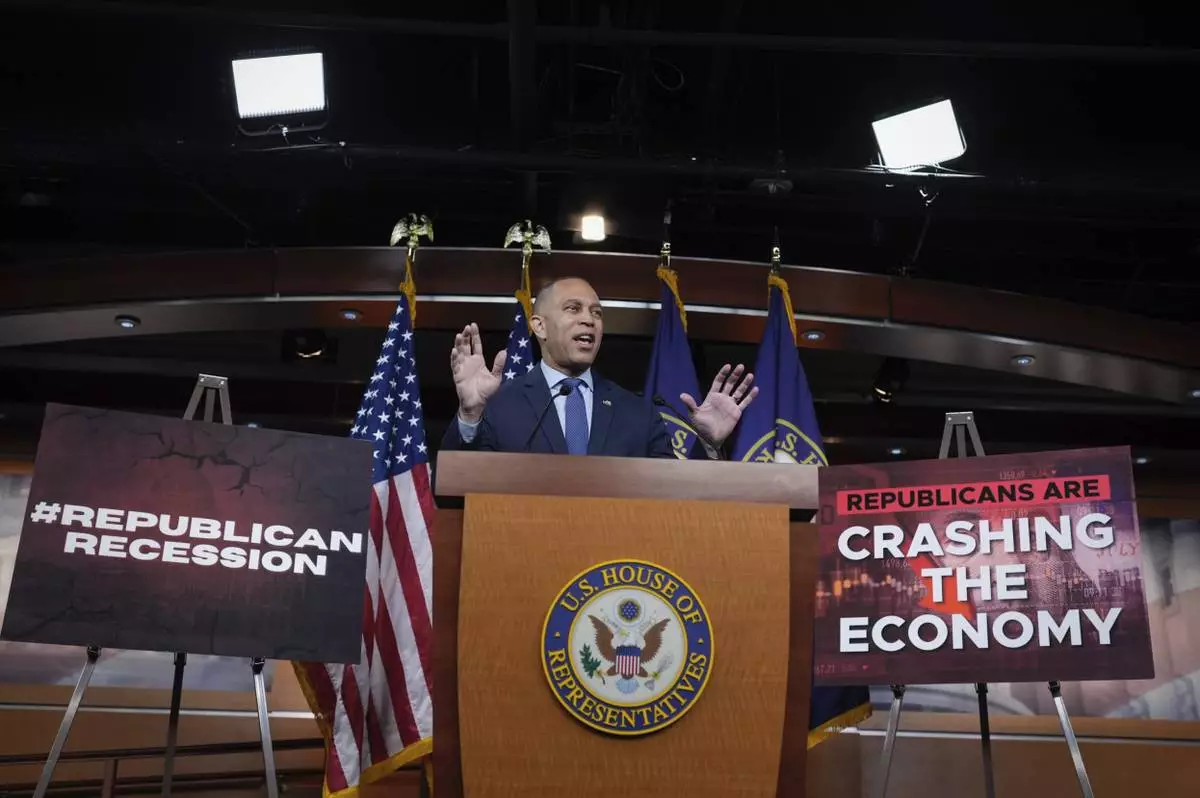
House Minority Leader Hakeem Jeffries, D-N.Y., criticizes the agenda of President Donald Trump and the tactics of billionaire Elon Musk in a pivotal Wisconsin election where Democrats won, during a news conference at the Capitol, in Washington, Wednesday, April 2, 2025. (AP Photo/J. Scott Applewhite)
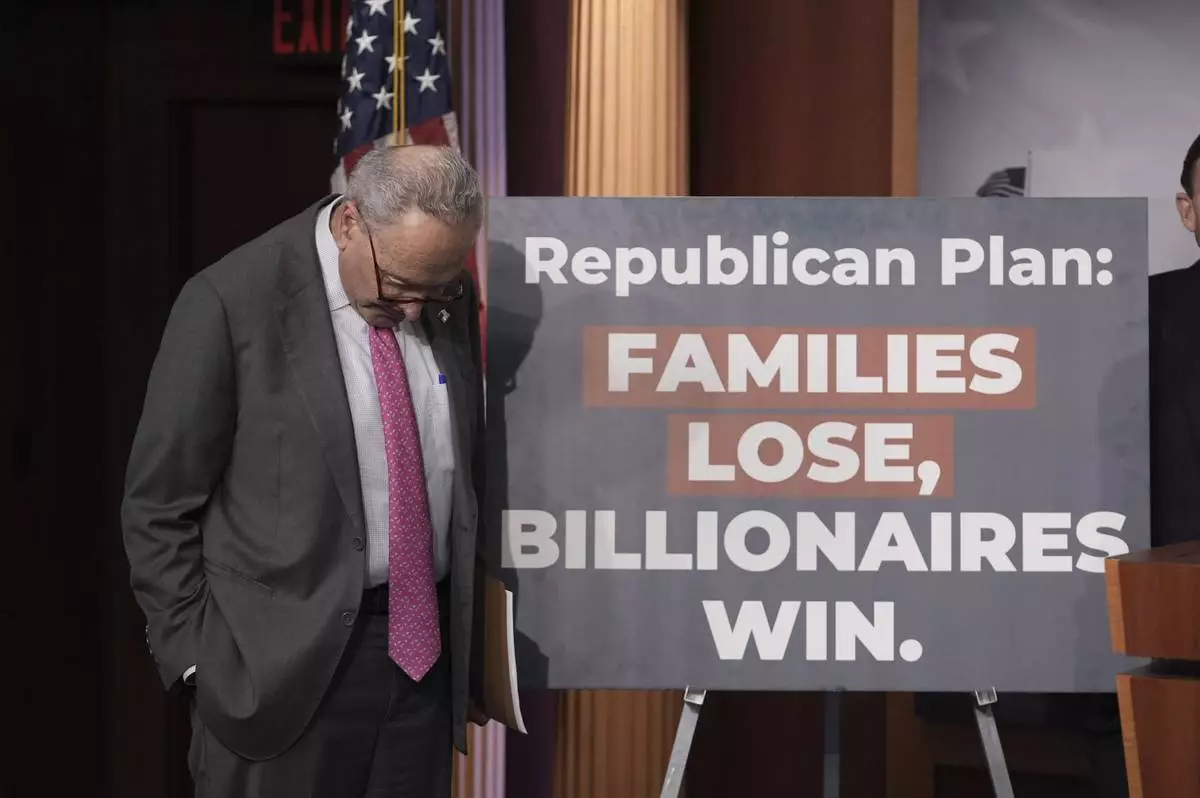
Senate Minority Leader Chuck Schumer, D-N.Y., attends a news conference discussing the Republican-backed budget plan at the Capitol, in Washington, Thursday, April 3, 2025. (AP Photo/J. Scott Applewhite)
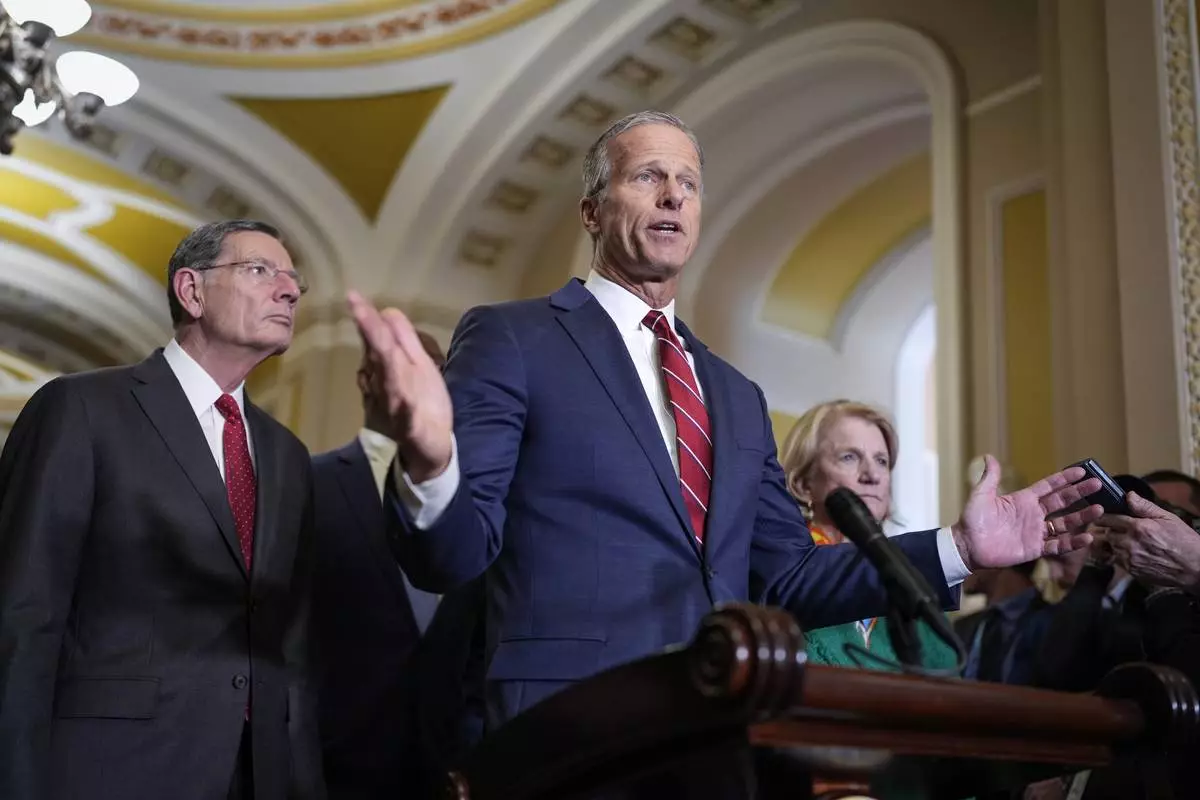
Senate Majority Leader John Thune, R-S.D., joined by Sen. John Barrasso, R-Wyo., the GOP whip, left, talks to reporters ahead of announcements by President Donald Trump on tariffs, at the Capitol, in Washington, Tuesday, April 1, 2025. (AP Photo/J. Scott Applewhite)
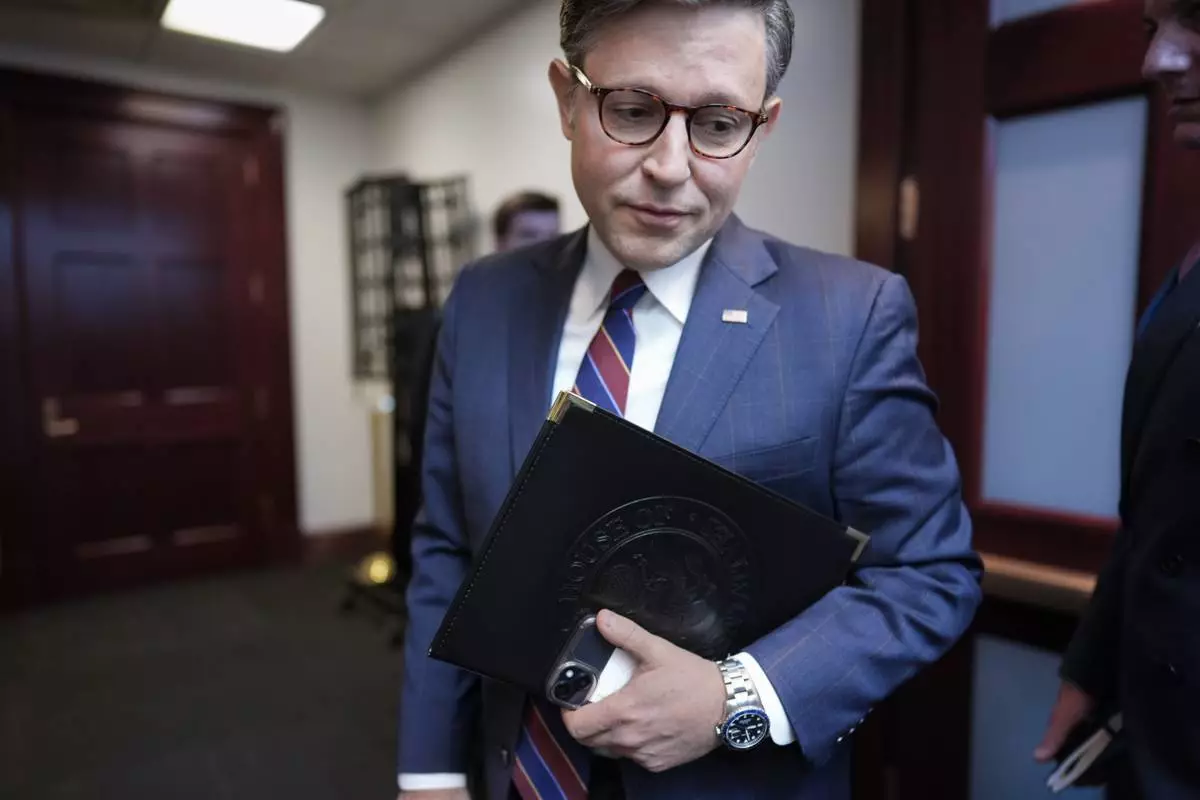
Speaker of the House Mike Johnson, R-La., talks with reporters as he arrives for a closed-door strategy session with fellow Republicans ahead of announcements by President Donald Trump on tariffs, at the Capitol, in Washington, Tuesday, April 1, 2025. (AP Photo/J. Scott Applewhite)
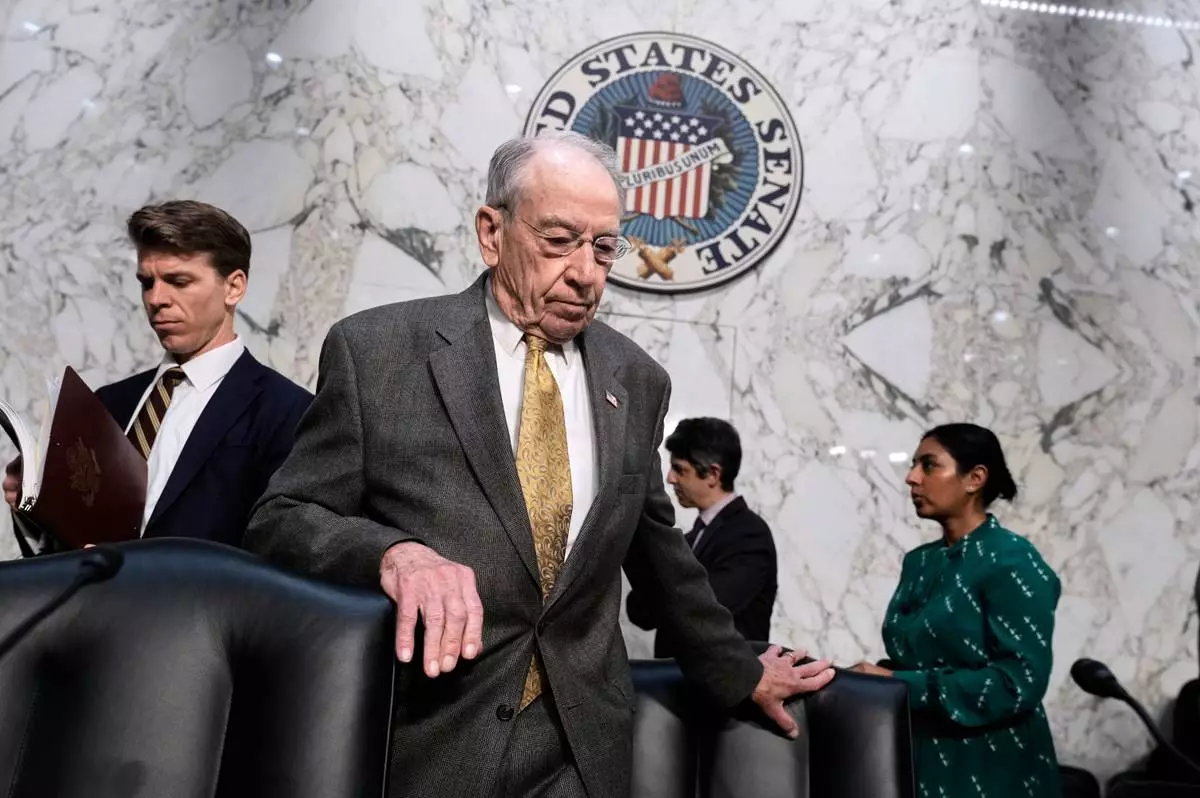
Senate Judiciary Committee Chairman Chuck Grassley, R- Iowa, takes his seat as the panel meets to consider prescription drug pricing and other measures, at the Capitol in Washington, Thursday, April 3, 2025. (AP Photo/J. Scott Applewhite)









